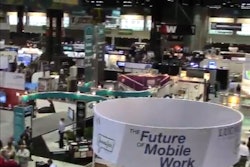
Although Labor Management Systems (LMSes) have existed and successfully paid their way for years – offering workforce savings of anywhere between 5 and 30 percent, depending upon whom you ask – many companies still haven’t made widespread investments in them.
In certain cases, a low or non-existent LMS adoption rate is understandable (see sidebar). But in many others, it’s subject to debate, because many of the common arguments that companies have for holding off may not be as compelling or accurate as initially advertised.
Although Labor Management Systems (LMSes) have existed and successfully paid their way for years – offering workforce savings of anywhere between 5 and 30 percent, depending upon whom you ask – many companies still haven’t made widespread investments in them. In the recent edition of Food Logistics, David Frentzel, senior vice president of global consumer industry at APL Logistics, a Singapore-based supply chain solutions provider with an office in Scottsdale, Ariz., examines the “flip side” of LMS objections.
In certain cases, a low or non-existent LMS adoption rate is understandable (see sidebar). But in many others, it’s subject to debate, because many of the common arguments that companies have for holding off may not be as compelling or accurate as initially advertised.
Many Tier One LMS options are indeed pricey, with final tabs totaling more than $1 million once the costs of implementation and support are added in. (And to their credit, they often offer impressive functionality that’s well worth it, which is why several of our company’s largest and most complex operations currently use them.)
However, that doesn’t mean there aren’t many other well-performing LMSes that may be just as capable of meeting most of your company’s initial objectives for considerably less. That’s what my company discovered when we decided to deploy LMSes at several of our facilities across the U.S. After carefully weighing our options, we selected a mid-range solution that had many if not all of the capabilities these facilities needed – and a friendlier price tag of less than six figures per facility. Thus far, that solution has proven to be highly effective.

















